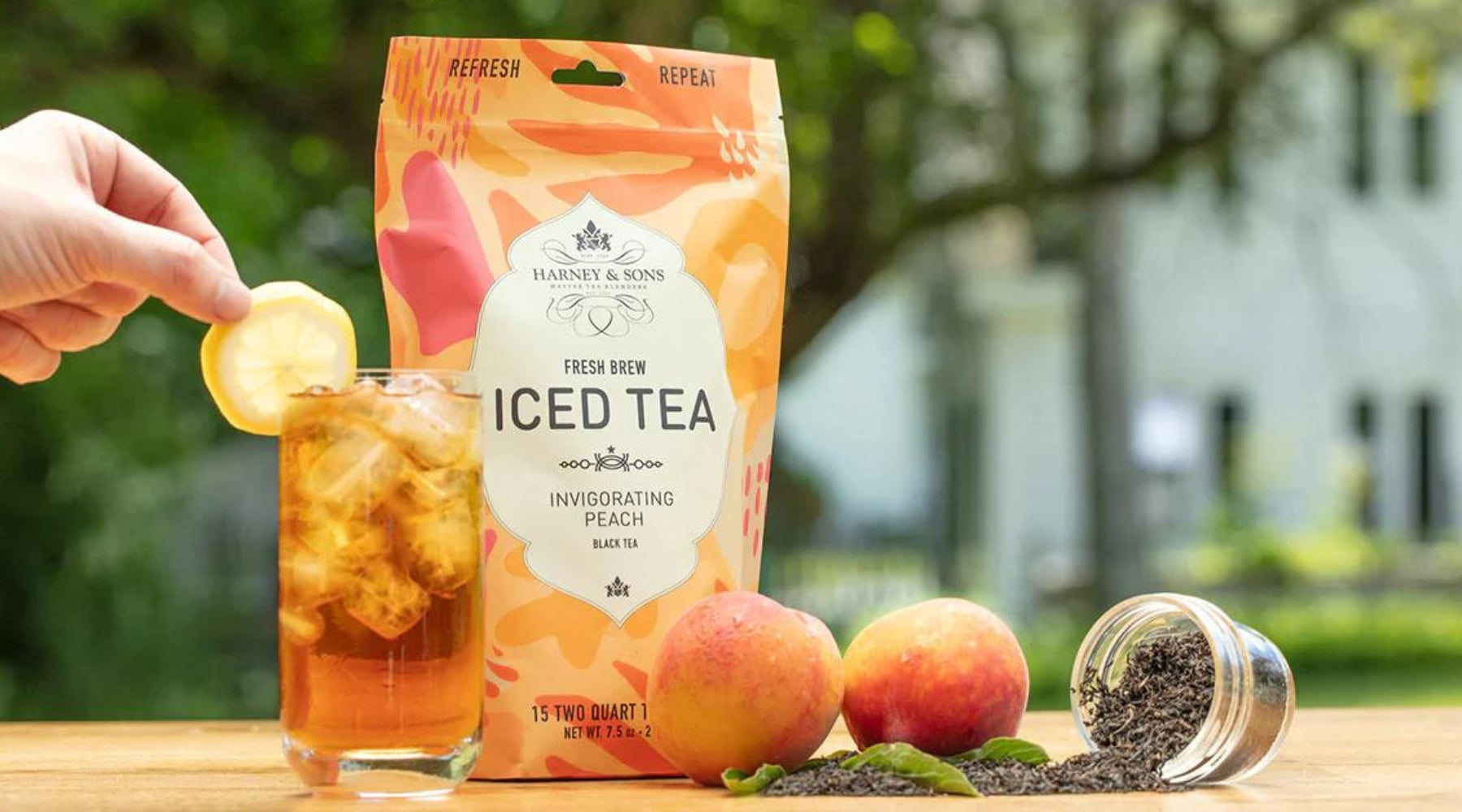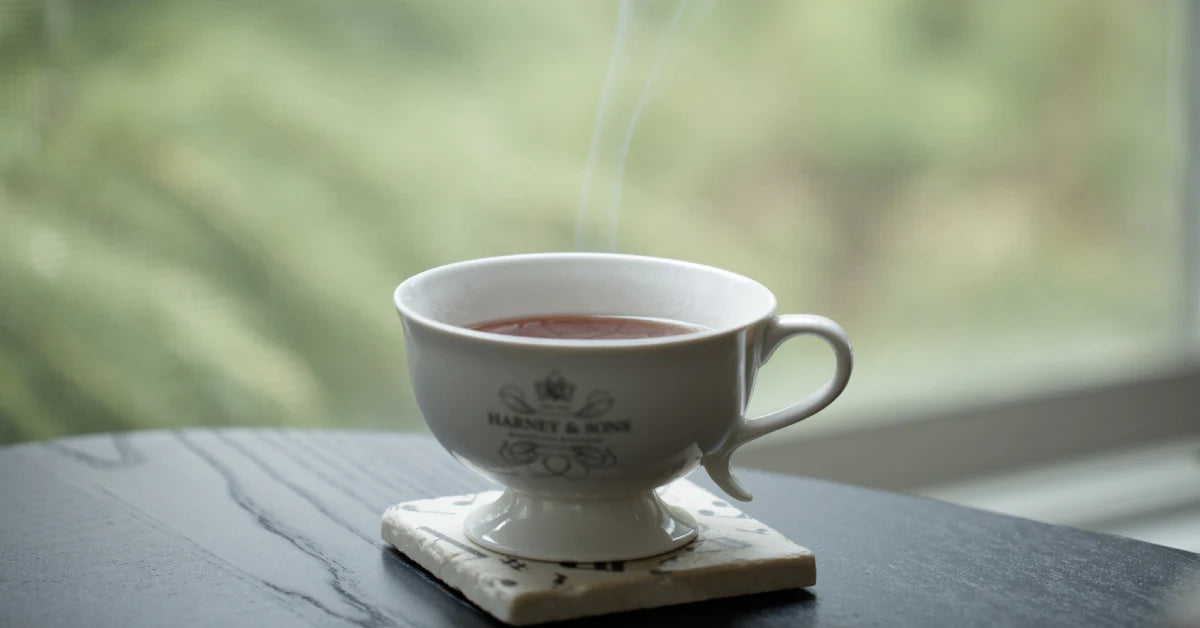There are two different ways to decaffeinate tea. At Harney and Sons, we use Carbon Dioxide (CO2) and Ethyl Acetate to make our decaf teas. Read on to learn more about our decaffeination process.

What Is the Difference Between Decaffeinated Tea & Caffeine Free Teas?
All teas made from Camellia Sinensis contain natural levels of caffeine. Caffeine is one of many self-defense chemicals that a tea uses to defend itself in this cruel world. Pound for pound there is more caffeine in tea than coffee, but who drinks a pound of tea? So cup for cup, tea is much less. In fact, you have to drink 3 cups of tea to get the same amount of caffeine as a cup of coffee.
Different parts of the tea leaves have different levels of caffeine. The delicious but defenseless tea buds have the most, green teas have slightly less and black teas even less. Of course, you steep black tea longer than green tea, so it is a bit complicated. Still, it is correct to say that there is more caffeine in white tea than black tea. The decaffeination process almost eliminates all of the caffeine.
Caffeine-free "teas" are not teas at all but blends of herbs, flowers, spices and dried fruit. When there is only a single ingredient, such as our Peppermint, these are referred to as Tisanes.
The Carbon Dioxide (CO2) Tea Decaffeination Method
The Carbon Dioxide (CO2) Tea Decaffeination Method, is how we decaffeinate our loose teas. Choosing to use this process ensures that we don’t lose the flavors and health benefits you love in our caffeinated teas when we remove the caffeine. When put through this process, our tea leaves are placed with naturally occurring gas, CO2, at a high pressure and high temperature. The carbon dioxide reaches a “super-critical state” where CO2 becomes almost a liquid solvent, and it attracts the caffeine molecules and removes them from the tea. Since flavor molecules are larger than caffeine molecules, they remain intact so the flavor of tea remains the same.

The Ethyl Acetate Decaffeination Method
Ethyl acetate is used to decaffeinate the tea found in our teabags. During this process, the molecules of caffeine bond to the molecules of ethyl acetate and are removed. Our customers prefer this method for our teabags.
The Water Processing Decaffeination Method (Swiss Water Method) and the Methylene Chloride Decaffeination Method
There are 2 other methods used for hard coffee beans, but these methods do not work for fragile tea leaves - the Water Processing Decaffeination Method, also known as the Swiss Water Method, and the Methylene Chloride Decaffeination Method.
DIY Decaffeination Method
Many tea lovers believe that if they steep their favorite caffeinated tea, dump the water, then steep again it will decrease the amount of caffeine in the cup. Unfortunately, this is a bit of an old wives tale. Studies show that tea keeps giving off caffeine for about 8 minutes. This method is not recommended as it dilutes the flavor of your tea.
No matter your reason for drinking caffeine-free tea, whether it’s doctor’s orders or sleeplessness, you can find decaf tea you’ll love at Harney & Sons.



